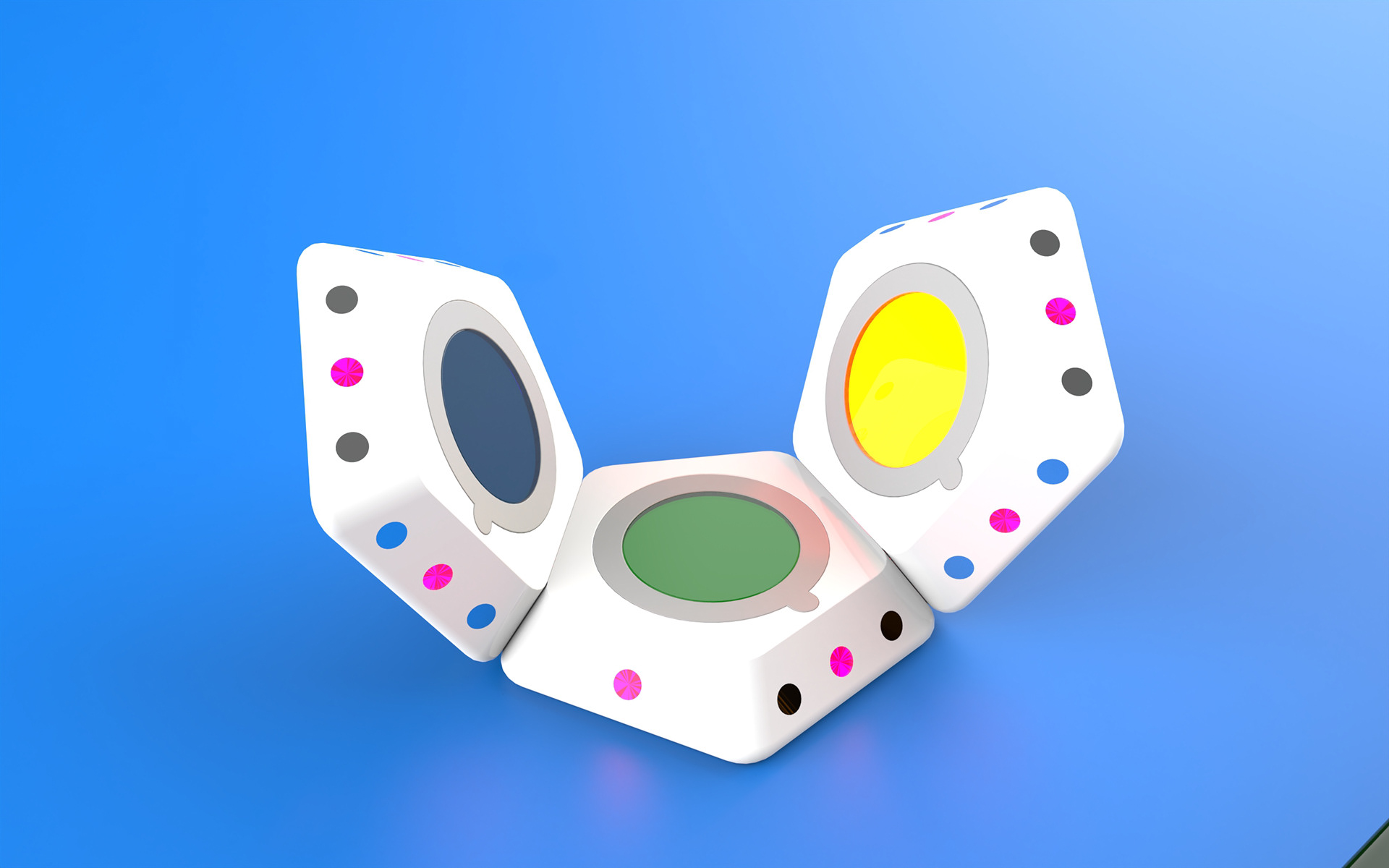Concept Work
Year / 2024
Timeline / 2 weeks
Industry / Toys, Puzzles, Games
Year / 2024
Timeline / 2 weeks
Industry / Toys, Puzzles, Games
Luma*clic is an electronic light game designed for children aged 4 to 12. The objective is to teach color theory by having players create secondary and tertiary colors through magnetic connections, forming a complete dodecagon. Additionally, it may assist in identifying color blindness in young users.
Design
The game comprises a 12-sided structure, each side featuring individual hexagonal light modules. Each module includes five small lights on the back, one on the front, two magnets on each edge, and an infrared (IR) light on each side to transmit information to the central hub. The neutral-toned body with soft edges ensures the vibrant colors remain the focal point. Each module can display primary, secondary, and tertiary colors.
The game comprises a 12-sided structure, each side featuring individual hexagonal light modules. Each module includes five small lights on the back, one on the front, two magnets on each edge, and an infrared (IR) light on each side to transmit information to the central hub. The neutral-toned body with soft edges ensures the vibrant colors remain the focal point. Each module can display primary, secondary, and tertiary colors.




Gameplay
Players begin by separating the pieces, which then illuminate in various colors. The task is to connect two primary-colored modules to the corresponding secondary-colored module; successful connections cause the lights to turn white, indicating completion of that section. This process is repeated, combining completed sections until the entire dodecagon is restored. For an added challenge, players can opt to include tertiary colors in the game.
Players begin by separating the pieces, which then illuminate in various colors. The task is to connect two primary-colored modules to the corresponding secondary-colored module; successful connections cause the lights to turn white, indicating completion of that section. This process is repeated, combining completed sections until the entire dodecagon is restored. For an added challenge, players can opt to include tertiary colors in the game.



Final Thoughts
Lumaclic is more than just a game—it’s an interactive learning tool designed to make color theory engaging and intuitive for children. By incorporating tactile exploration and real-time feedback, it encourages problem-solving, creativity, and collaboration. The modular design ensures replayability, while the potential to assist in identifying color blindness adds an additional layer of value.
Lumaclic is more than just a game—it’s an interactive learning tool designed to make color theory engaging and intuitive for children. By incorporating tactile exploration and real-time feedback, it encourages problem-solving, creativity, and collaboration. The modular design ensures replayability, while the potential to assist in identifying color blindness adds an additional layer of value.
Looking ahead, Lumaclic could be expanded with new modes, difficulty levels, or even an adaptive app integration to enhance accessibility and track learning progress. This project showcases the intersection of design, technology, and education, emphasizing how thoughtful product design can create meaningful and immersive experiences.